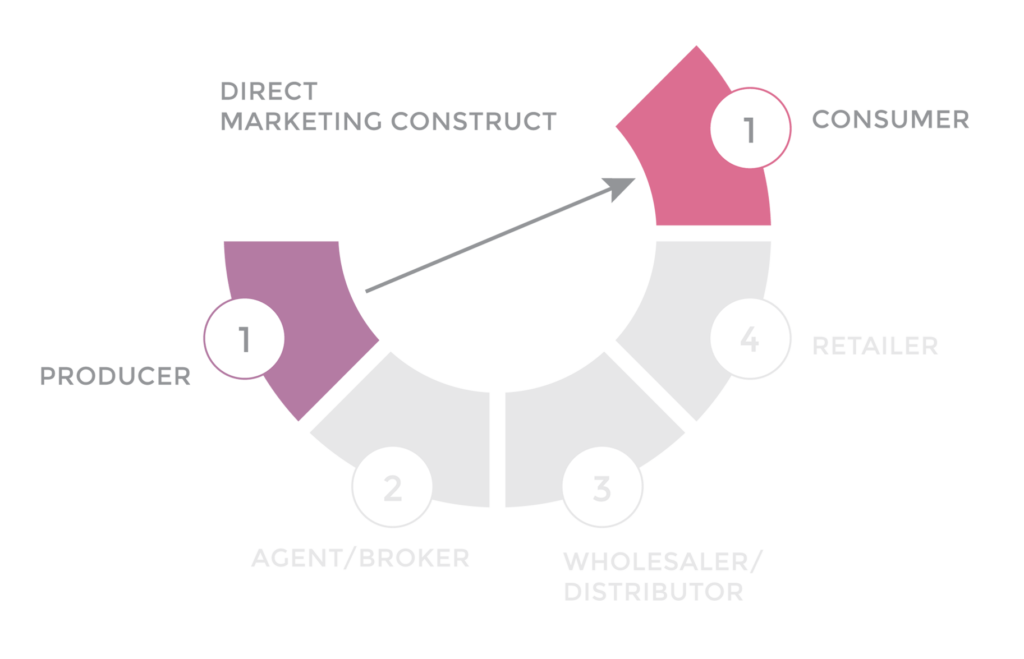Direct marketing is an often misunderstood discipline within the broader scope of the marketing practice. Some businesses are built entirely on the direct response model, while for others, brands may use direct as simply a support tool to their wider consumer marketing efforts.
What’s important to understand are the core differences between the two approaches. In the typical/traditional construct, producers sell to consumers through any number of intermediaries, depending on the category. There may be one, two, or even three intermediaries that “separate” the producer from the consumer. (See image above.)
In this case, there may be multiple marketing messages for the consumer to decipher: one from the producer about the brand, one from the retailer about sales periods and specials, and maybe even messages from another party, like a centralized organization interested in spurring category sales (think Milk Board, or the Beef Checkoff, as examples.)



23 Comments
pool contractors port charlotte fl
… [Trackback]
[…] Read More to that Topic: moddern.com/portfolio/direct-marketing/ […]
Dachdecker Zürich
… [Trackback]
[…] Read More on that Topic: moddern.com/portfolio/direct-marketing/ […]
เช่าที่เก็บของ
… [Trackback]
[…] Find More to that Topic: moddern.com/portfolio/direct-marketing/ […]
kasyno VOX
… [Trackback]
[…] Find More on on that Topic: moddern.com/portfolio/direct-marketing/ […]
Diaphragm Husky
… [Trackback]
[…] Information to that Topic: moddern.com/portfolio/direct-marketing/ […]
bgame777
… [Trackback]
[…] There you can find 41247 more Info on that Topic: moddern.com/portfolio/direct-marketing/ […]
y2k168
… [Trackback]
[…] Read More Info here on that Topic: moddern.com/portfolio/direct-marketing/ […]
pg slot
… [Trackback]
[…] Find More on that Topic: moddern.com/portfolio/direct-marketing/ […]
ค่าน้ำแทงบอล เล่นได้ที่ไหน
… [Trackback]
[…] Read More to that Topic: moddern.com/portfolio/direct-marketing/ […]
gubet
… [Trackback]
[…] Read More to that Topic: moddern.com/portfolio/direct-marketing/ […]
ricky casino
… [Trackback]
[…] Information on that Topic: moddern.com/portfolio/direct-marketing/ […]
online casino
… [Trackback]
[…] Info to that Topic: moddern.com/portfolio/direct-marketing/ […]
trusted link
… [Trackback]
[…] Read More here on that Topic: moddern.com/portfolio/direct-marketing/ […]
sos evakuators
… [Trackback]
[…] Read More on to that Topic: moddern.com/portfolio/direct-marketing/ […]
สายคาดกล่องอาหาร
… [Trackback]
[…] Find More on to that Topic: moddern.com/portfolio/direct-marketing/ […]
xo
… [Trackback]
[…] Find More on that Topic: moddern.com/portfolio/direct-marketing/ […]
Replica Bags Recommended Blog
… [Trackback]
[…] Find More Information here on that Topic: moddern.com/portfolio/direct-marketing/ […]
endolift
… [Trackback]
[…] Read More Information here on that Topic: moddern.com/portfolio/direct-marketing/ […]
empresa informatica
… [Trackback]
[…] Read More on on that Topic: moddern.com/portfolio/direct-marketing/ […]
แทงหวย
… [Trackback]
[…] There you will find 29806 more Info on that Topic: moddern.com/portfolio/direct-marketing/ […]
vps forex
… [Trackback]
[…] Here you can find 40001 more Information to that Topic: moddern.com/portfolio/direct-marketing/ […]
รับซื้อกระเป๋าแบรนด์
… [Trackback]
[…] Read More on to that Topic: moddern.com/portfolio/direct-marketing/ […]
เว็บปั้มไลค์
… [Trackback]
[…] Find More on to that Topic: moddern.com/portfolio/direct-marketing/ […]